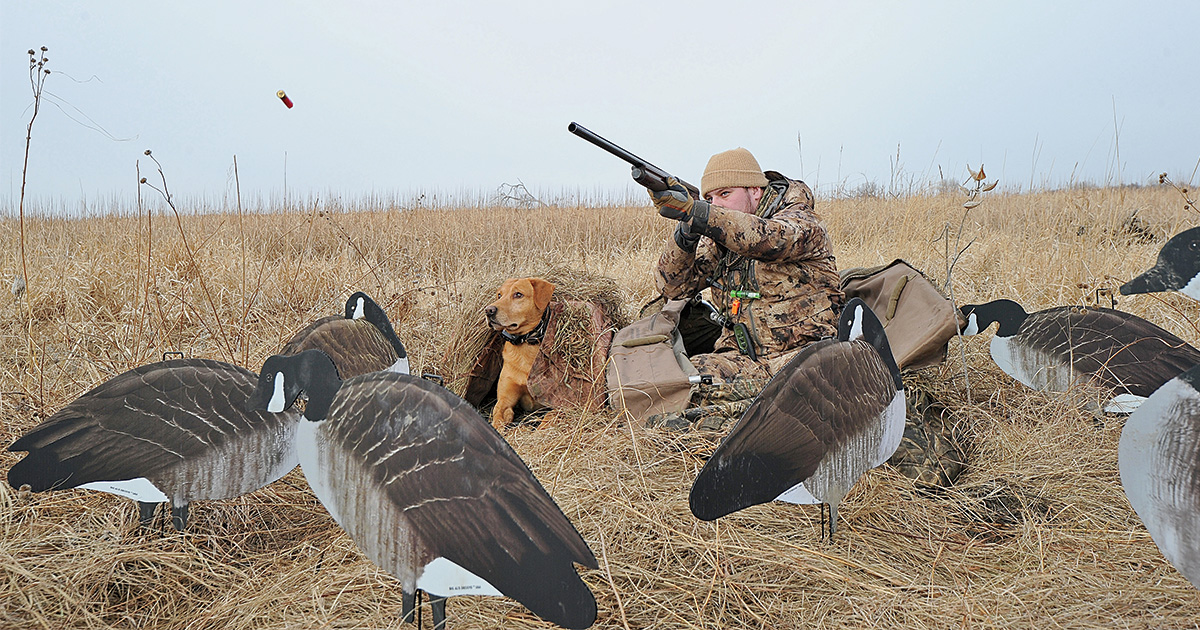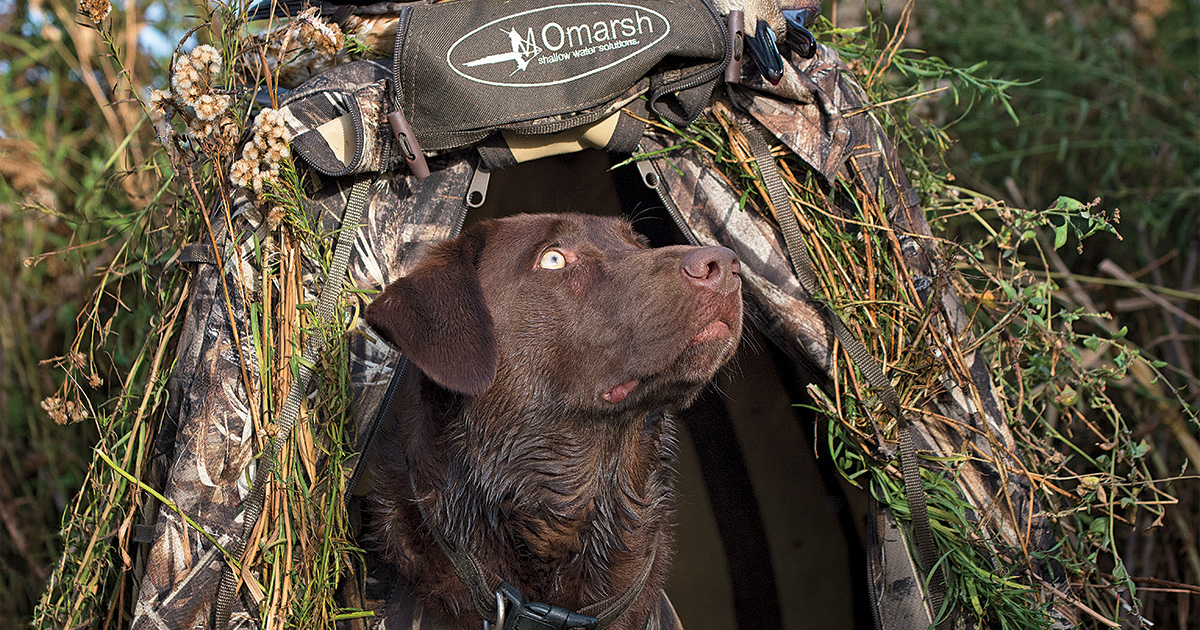Shotgunning: Retrievers and Guns
How to keep your dog and your hunting partners safe in the blind
How to keep your dog and your hunting partners safe in the blind


HEARING SAFETY: To protect your dog's ears, keep him behind the guns and never shoot over his head.
Retrievers and shotguns operate in close proximity during many waterfowl hunts. Making sure dogs and hunters stay safe in these situations takes forethought, training, and certain precautions. Ira McCauley is uniquely qualified to talk about retrievers and guns. A partner in Missouri's Habitat Flats hunting lodges, founder of Momarsh waterfowl products, and co-owner of two veterinary offices, he's a die-hard retriever man. Here's his advice.
A careful introduction to gunfire is a crucial step in any retriever's education. McCauley says dove season is the perfect time for an initial lesson. "I don't take puppies dove hunting, but I will bring a pup near a dove field where a lot of people are shooting," he says. "We stay about 150 yards away—close enough to hear the guns but not so close that they're frightening. I give the pup a lot of positive reinforcement, and we'll play or throw a bumper to build a happy association with the sound of guns."
As a pup progresses in his training, additional steps are necessary to ensure that he is properly conditioned to gunfire and ready to hunt. Once he is, you should have a strategy for his initial trips to the blind. During a retriever's first hunts, McCauley focuses on handling his dog instead of shooting. This not only keeps the dog safe and happy; it's a good way to head off bad habits before they form. "I'll sit out the first volleys," he explains. "I want to watch the dog and make sure he's not stressed and that he doesn't break."
Every year, it seems, you read at least one "dog shoots hunter" news story. McCauley points out that the responsibility lies entirely with the hunter. "Dogs don't know what guns are," he says. "It's up to us to keep our retrievers safe around firearms. Don't put a loaded gun on the ground or in the bottom of a boat near a dog. Be sure all guns in vehicles are unloaded. Keep your dog under control and don't let him run around in the blind."
McCauley has seen dogs in many unsafe situations. One of the more common is when an unsteady dog breaks into the line of fire. "Pit blinds are especially dangerous because the guns are down at ground level and the dog can get in the line of fire so fast that you never see it until it's too late," he says. If the dog isn't completely steady, tie him up or use an e-collar so you can stop him from breaking immediately.
Just like hunters, dogs can suffer from gunfire-induced hearing loss. The most important way to protect your dog's hearing is to avoid shooting directly over his head. "We set our dog blinds behind us, even in a permanent blind," McCauley says. "People say they want to have their dog out front to mark falls, but I would rather have him behind the guns, where his ears aren't as exposed." He adds that you should never, ever put a dog in front of you in a sneak boat or layout blind.
Compared to a human, a dog's life is short. This past season, McCauley had to start over with a young dog when his Lab, Sadie, died suddenly. "I was Sadie's best friend. She was my best friend. It was a good chapter, and that's all you can hope for with a dog," McCauley says. Taking precautions to keep your dog safe will help make that chapter as long and rich as it can possibly be.

A BLIND FOR YOUR DOG: Momarsh founder Ira McCauley says training a dog to obey the place command is vital to a safe hunt. A blind gives your dog a place of his own on the hunt, where he isn't in the line of fire, knocking guns over, or in danger of wandering off or being hit by a vehicle. Momarsh offers dog blinds for both water and field. It's Invisi-Lab blind has telescoping legs for water hunts, while the Field House blind is made for dry land.
Ducks Unlimited uses cookies to enhance your browsing experience, optimize site functionality, analyze traffic, and deliver personalized advertising through third parties. By continuing to use this site, you agree to our use of cookies. View Privacy Policy